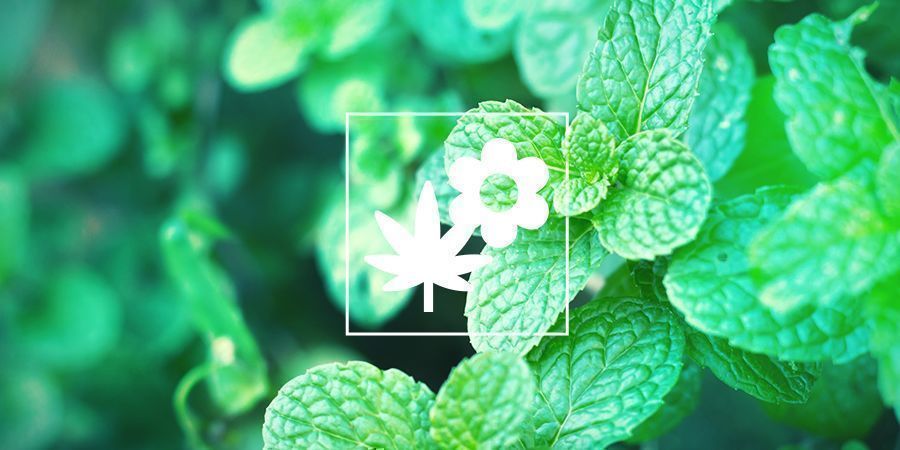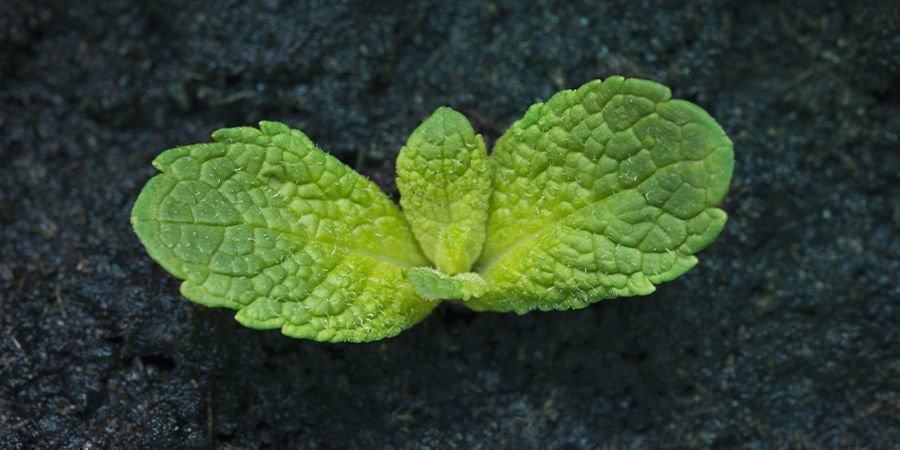Cannabis Companion Planting: Mint
Growing peppermint won't just reward you with a plethora of good uses in the kitchen or a refreshing cup of tea. Find out why mint is also a perfect companion plant to grow alongside your cannabis.
With home grow on the rise just about everywhere, particularly as possession and planting itself is becoming legal, growers are always looking for ways to better their results if not yield, particularly those that involve natural rather than chemical options. The idea of companion planting is one such idea.
WHAT IS COMPANION PLANTING?
The idea behind companion planting is to improve the overall growing environment, as well as conditions, by growing different kinds of complimentary plants close to one another. Individual plants all have individual “protection” mechanisms, which allow them to survive to maturity and ensure the survival of the species. This includes emitting odours and resins to protect them from insects or to invite beneficial predators. Plant roots can also improve the surrounding soil through both aeration and nutrient promotion. Some plants can even provide structural support for the other types of vegetation they grow around.
THC itself, the psychoactive ingredient in cannabis, is a natural repellent that deters hundreds of pests. That said, the plant is still susceptible to many of them. Companion planting helps protect your cannabis plants. Companion planting is also not an option limited to outdoor growers.
CANNABIS AND MINT
Planting peppermint in and around your cannabis crop is the best way to fight aphids – small lice or bugs that feed by sucking sap from plants. Aphids reproduce rapidly, sometimes without even mating. Large numbers of them can cause extensive damage to plants, including marijuana.
Mint repels aphids because they contain menthol. Mint also keeps mice, roaches and ants at bay. It is also a good way to (attempt to) mask the smell of growing cannabis – although it will not completely do so unless you are growing more mint than cannabis.
That said, mint tends to be a highly invasive plant. Plant it in pots near your cannabis rather than directly in the same plot of ground or growing pot.
MINT CHARACTERISTICS
The name of the plant derives from mythological origins. The god Proserpine became jealous of Cocytus’s daughter, Minthe, who she turned into the plant – thus also creating the saying “green with envy”. The name of the plant means green.
It is a hardy perennial herb, native to Mediterranean countries and can grow up to 60cm tall. Its leaves are wrinkled with toothed edges, and the plants end to be short-stemmed and in the shape of lances.
Mint flowers are male on the first day of the bloom and female on the second day. This is believed to be part of the way mint survives and transmits pollen via insects. The flowers range in colour from blue to red. Many members of the Salvia genus have trichromes or hairs (just like the cannabis plant) that grow on the leaves, stems and flowers of the plant.
Salvia is the largest genus of plants in the mint family. There are nearly 1,000 species of shrubs, herbaceous perennials and annuals within the genus.
HOW TO GROW MINT
Mint requires moist, rich loam and partial shade. This means when growing it next to marijuana plants, you need to keep the mint plants shorter than the surrounding cannabis and insert them after the cannabis has achieved enough height so the mints will not overshadow, literally, the cannabis itself, which requires a great deal of light. Plants should be between 10-20cm apart.
The plant will spread easily on its own. This is the reason that, especially when using it as a companion plant, it should be kept in separate pots – otherwise it could compete with root space and soil nutrients needed by the cannabis plant. Be sure not to use a cracked plant because the plant’s roots or runners, will find their way out of the pot and continue to spread. It is also very easy to grow mint from cuttings.
CROSS-POLLINATION
Companion planting cannabis with mint will also not lead to cross-pollination between the cannabis and the mint themselves. That said, mint itself is notorious for being able to cross-pollinate across other mint species, as well as other kinds of closely related plants.
ADDITIONAL BENEFITS
The other reasons for choosing mint as a companion plant to your cannabis grow are also numerous. That said, if growing an outdoor crop, mint attracts bees and other pollinators, which is not necessarily a good thing for your cannabis, which can suffer from cross-contamination from nearby cannabis and hemp crops. In fact, in some parts of the United States, as both hemp and marijuana grows have become legal and are proximate to one another, hemp and cannabis farmers have tried to limit the other type of plant from being grown too closely to each other.
Apart from this, however, mint is also a tasty herb that can be used on its own as a tea as well as tasty compliment to food dishes and strained into oils that can be used for aromatherapy.













 United States
United States












